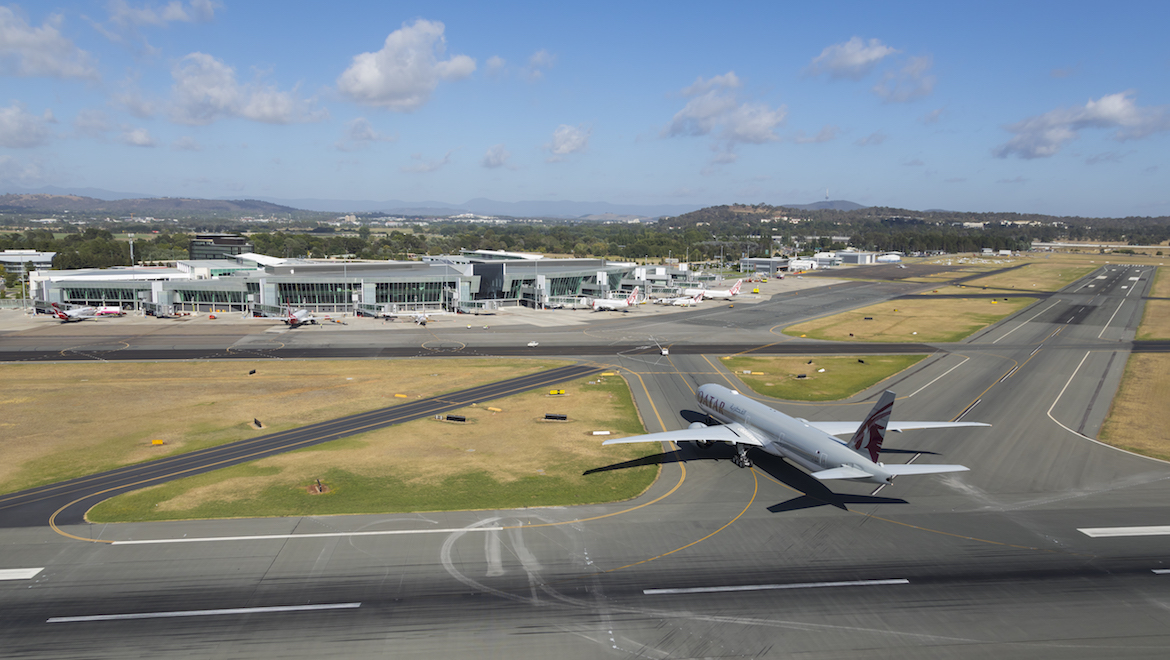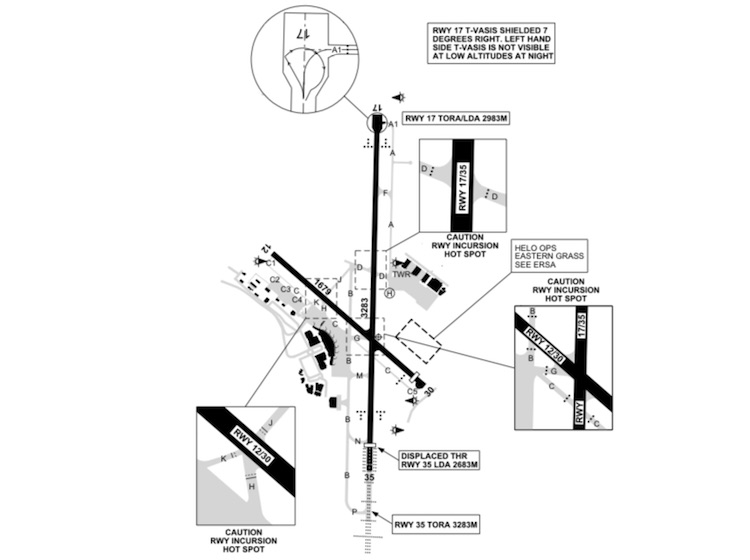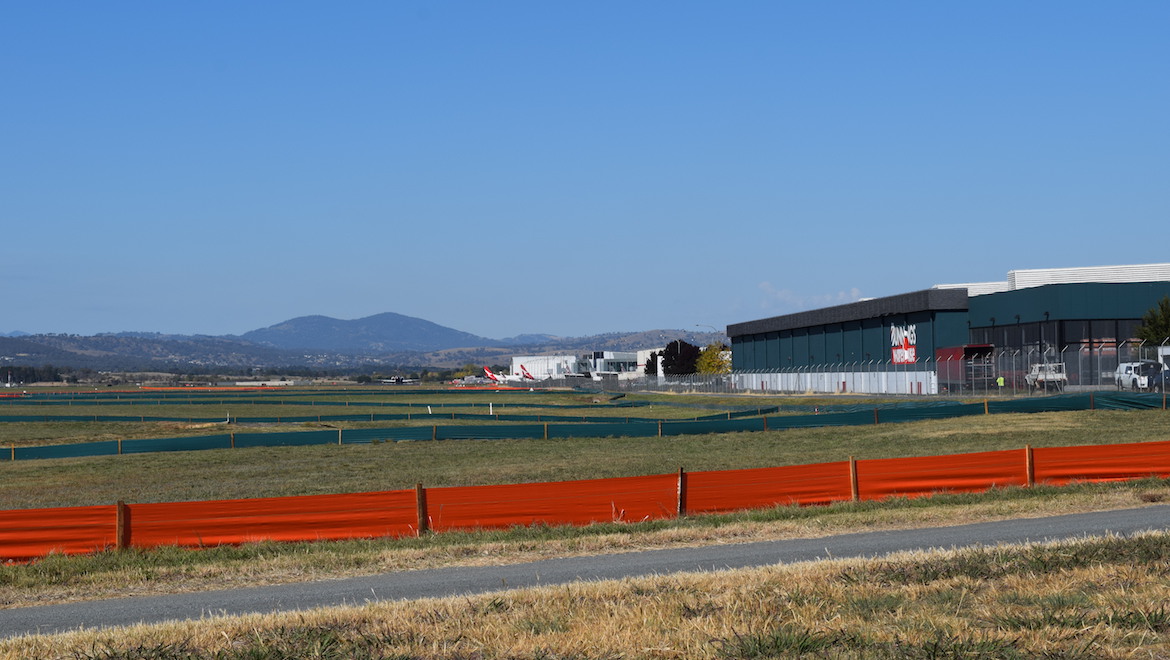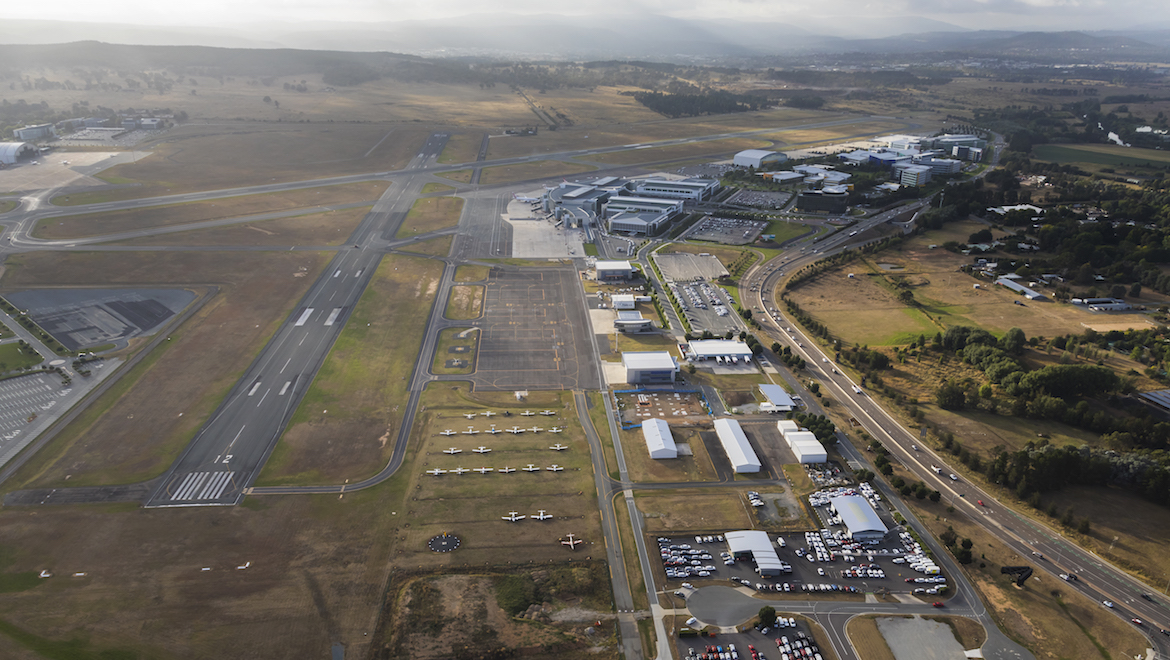
Canberra Airport is extending one of its taxiways to run the full length of the main runway to streamline arrivals and make it safer for aircraft to move about on the airfield.
Currently, the two taxiways for Runway 17/35 only cover part of the airport’s main runway.
Flights landing from the south exit Runway 35 using taxiway A on the far side of the airfield after landing and then cross the runway to reach the terminal.
Canberra Airport said this could require aircraft to wait up to five minutes for other planes to land before being able to cross the runway.
Meanwhile, flights landing from the north on Runway 17 can use taxiway B on the terminal side to reach the airfield.
However, taxiway B is not available for Runway 35 arrivals as it only runs two-thirds of the length of the runway, as the diagram below from the Airservices Australia website showed.

The extension will extend taxiway B to run the entire length of the main Runway 17/35 and eliminate the need to cross the runway via taxiway A.
Work has begun identifying existing underground infrastructure that could potentially be impacted by the extension, Canberra Airport said on Wednesday.
The project, which has been contracted mainly to Canberra companies, would employ 80 workers and was expected to take between 12-18 months.
The work would be completed in the daytime and occasionally at night after the last flights had landed.

Canberra Airport head of aviation Michael Thomson said the extension would save passengers time.
Further, it would also create a more valuable national infrastructure for the city, with the airport being able to handle more freight and wide-body aircraft, as well as provide safer aircraft movements.
“Canberra Airport is recognised by the ACT and NSW Governments as a global gateway to our international city and the region,” Thomson said in a statement.
“Planes continue to get bigger and passengers are increasingly time poor and need more efficient travel. This will allow planes to vacate our runway more quickly and get visitors to our nation’s capital on their way.”
In 2013, the old airport terminal was demolished and replaced by a new building designed to handle up to eight million passengers a year.













